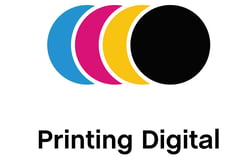A significant percentage of designers have little to no experience in creating print projects. When they shift to printed materials, this lack of knowledge can cause them to make design decisions that add unnecessary costs and make it tough for printers to produce the product the designers envisioned. Designers accustomed to working in digital channels may not be conscious of the details that determine the success or failure of a print project.
they shift to printed materials, this lack of knowledge can cause them to make design decisions that add unnecessary costs and make it tough for printers to produce the product the designers envisioned. Designers accustomed to working in digital channels may not be conscious of the details that determine the success or failure of a print project.
Educating designers about print has become important as more businesses are realizing the new role print plays in overall marketing strategies. An organization cannot always achieve their marketing objectives with a digital-only approach.
Consumers respond to printed communications differently than how they consume digital content. They enjoy receiving direct mail or exposure to printed messages and they pay attention when the presentation of ideas and offers feature ink on paper or other physical substrates. Studies have shown that consumers retain information and recall brand content better when they consume printed materials. They trust information that comes to them in printed form and take action more often compared to digital advertising.
Print’s Rise in Popularity
This change in consumer attitudes about print and renewed interest from marketers should encourage designers to learn more about how print is produced. Printing companies can help designers understand the costs involved and appreciate how print differs from the digital channels for which they’ve been designing for some time. Printers can help designers take advantage of print’s re-emergence as a critical marketing tool.
Connecting Print to Digital
Digital designers will be especially interested in how print can bridge the space between physically printed materials and the digital environment. Prepare some short videos or slide decks for designers that show examples of how to deploy new technologies. QR codes, augmented reality (AR), or Informed Delivery can connect printed materials with digital campaign assets the designer has probably supplied.
For tracking and follow-up in direct mail jobs, suggest ways to use personal URLs (pURLs) to provide data that identifies which postal mail recipients interact with the brand. Introduce the tracking capabilities offered by the USPS Informed Visibility program that notifies mailers when the mailpieces are delivered so they can trigger supplementary email or text messages.
Designers can add these new technologies to their print projects, allowing the messaging that begins with print to continue and expand via easily accessed digital channels with which the designers are already familiar.
Be Proactive—Create a Guide
To lessen the impact of poorly prepared files that arrive in your print operation, consider developing a guide for designers. Help them confirm they’ve taken all the steps necessary to ensure their job prints accurately, on time, and produces expected results.
Here are some areas you might want to include in a designer’s guide:
Proofing
Check for spelling, spacing, grammar, capitalization, and word usage. Ask others to proof the project as well. Emphasize that corrections made before sending the file to you will be much easier and cheaper to make than last-minute edits that happen after you begin working on the project.
Bleed and Crop Marks
Explain what bleed and crop marks are, and how you want your designers to use them.
Colors

Remind designers that print uses cyan, magenta, yellow, and black, whereas computer, tablet, and phone screens render in red, green, and blue. Be sure they convert colors to CMYK. Provide specific color conversion instructions for popular design software and explain about limitations in the CMYK color pallet.
Resolution
Help designers create photos and graphics designed to print perfectly at 300 dpi.
Fonts
Missing fonts are a common problem. Teach designers how to embed fonts in their PDF files using popular design software. Explain about the pros and cons of outline fonts.
The current trends suggest more digital-first designers will be working on print projects. Take the time to educate them on best practices for document design and file preparation so you can print their projects accurately, on time, and within budget.

